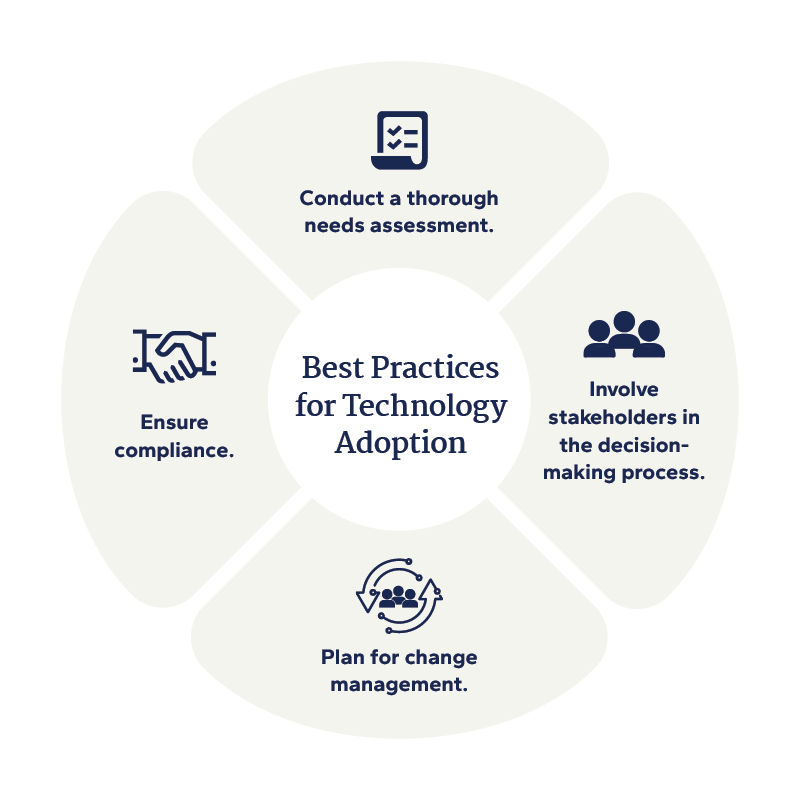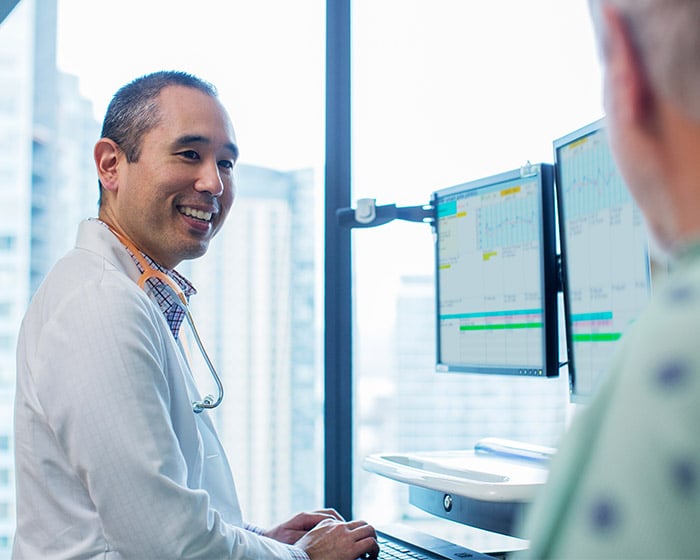Key Takeaways
- Strategic adoption and integration of healthcare IT can streamline operations and ensure compliance.
- Integrating financial systems with healthcare IT platforms, optimizing the RCM process, and adopting the right EHR system can boost financial efficiency.
- Healthcare leaders should follow best practices for healthcare technology adoption to ensure maximum ROI.
Healthcare leaders are facing mounting challenges in executing meaningful digital change. Poor data quality, difficult-to-upgrade legacy systems, financial limitations, and talent constraints are just some of the roadblocks.
By thoughtfully implementing EHR systems, optimizing revenue cycle management, and integrating financial systems with healthcare IT, you can streamline operations, increase financial efficiency, and enhance your quality of care.
Adopting Electronic Health Records (EHR) Systems
EHRs streamline the storage, retrieval, and management of patient health records, facilitating more efficient and coordinated care.
From an accounting perspective, EHR systems enable real-time access to patient data, enhancing billing accuracy and reducing errors from manual data entry. EHR systems also facilitate better financial reporting and analysis by integrating patient care information with financial data.
To maximize the benefits of EHR systems, it's crucial for healthcare organizations to select a system that aligns with their specific needs. When selecting an EHR system, consider:
- The system's ability to interact with existing financial and billing systems.
- The system’s adaptability to regulatory changes.
- How the system supports data analytics and reporting.
Optimizing Revenue Cycle Management Processes
Revenue cycle management (RCM) involves managing the entire lifecycle of patient care from appointment scheduling to final payment. Technology plays a pivotal role in optimizing RCM processes by automating tasks, such as claim submissions, coding, and billing, thereby reducing delays and enhancing cash flow.
- Learn more about how Robotic Process Automation (RPA) eliminates slower, error-prone, labor-intensive processes and has the potential to save time, reduce risk, and expedite revenue.
Investing in advanced RCM technology can help you minimize denied claims through automated verification of insurance eligibility and claim accuracy. Technology-driven analytics tools can identify patterns in denied claims, guiding improvements in future submissions.
Integrating Financial Systems with Healthcare IT Platforms
Integrating financial systems with healthcare IT platforms enables seamless communication between clinical and financial operations. By leveraging integrated systems, your team can track financial performance in real-time.
We worked with healthcare organization Vivie to integrate their systems for increased efficiency, smarter decision making, and reduced manual processes. “Because of the changing healthcare environment, if we don’t know our data, we’re actually going to be behind,” said CFO Marnie Gugisberg. “We want to be at the forefront of everything we do, and being data driven is part of that.”
- View their case study to hear more from Vivie on the impact of integrating their systems into a single source of truth.
To achieve successful integration, prioritize interoperability and data security. Choose platforms that can communicate with one another without data silos and ensure the security and compliance of any integrated system.
Best Practices for Technology Adoption
Adopting healthcare technology requires a strategic approach. Here are some best practices to consider:

Conduct a thorough needs assessment.
Understand your organization’s specific needs and how different technologies can address those needs. Download Mapping Your Digital Future: How to Unlock Opportunity with a 360° Assessment to learn more about conducting a comprehensive business assessment and creating a digital roadmap.
Involve stakeholders in the decision-making process.
This includes clinicians, IT staff, and financial managers to ensure the selected technology aligns with overall organizational goals. The key to success is in prioritizing strategy over technology.
Plan for change management.
Effective training and communication are critical for a smooth transition. And, implemented properly, change management has financial advantages.
Ensure compliance.
Compliance, particularly regarding patient data protection and financial reporting standards, is a critical concern. Technology can automate documentation and ensuring your financial practices align with regulatory requirements.
Maximize the ROI of Your Technology
Consider both direct and indirect benefits of technology adoption, including improved efficiency, reduced errors, and enhanced patient satisfaction. To maximize ROI, continuously monitor technology performance, making adjustments as needed.
Small steps today will help you make informed decisions tomorrow
Growth doesn’t come from standing still. In our experience working with healthcare clients, optimizing technology and updating legacy systems can result in time and cost savings. The results is a renewed focus on your patients.
At Eide Bailly we use our specialized industry knowledge and technical expertise to help you maximize financial and operational efficiency to perform at your full potential.
Make a habit of sustained success.

Healthcare
We focus on the business of your healthcare organization so you can focus on your patients.
Who We Are
Eide Bailly is a CPA firm bringing practical expertise in tax, audit, and advisory to help you perform, protect, and prosper with confidence.


